|
Located
ten miles out to sea in
the Gulf of Maine,
Monhegan Island has
sounded its siren call
to artists for almost a
century and half. Drawn
to its natural beauty,
its pristine isolation,
and its dramatic land
and seascapes, Monhegan
has been immortalized
in American art by
famous painters like
Jamie Wyeth, Rockwell
Kent, Robert Henri, and
Edward Hopper. A new
exhibition at the
Bowdoin College Museum
of Art, chronicles the
work of several artists
colonies in conjunction
with the ecological
changes the island has
experienced over
centuries.
The 4.5 mile island
boasts rugged
promontories,
magnificent Cathedral
Woods, a quaint fishing
village, a majestic inn
overlooking the harbor,
and an imposing
lighthouse – all
of which figure in the
iconography of the
artists who have made
pilgrimages there since
the mid 19th century to
summer and paint.
Monhegan derives its
name from the Abenaki
word "Monchigggon" or
out-to-sea island."
European explorers,
among them Martin
Pring, George Weymouth,
and Samuel de
Champlain, first
visited in the early
1600s. By the mid 1800s
artists began to
arrive, notably from
the Hudson River
School, the New York
School of Art, and the
Pennsylvania School of
Art. Their work
captured the dramatic
vistas of the island
and tacitly documented
the changes in the
landscape over the
centuries, as
deforestation occurred
during the sheep
grazing days, to the
present where
conservation has
restored much of the
forest land.
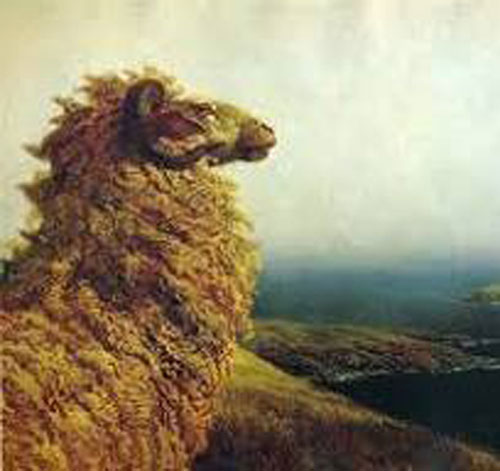
Welcoming visitors to the exhibit is Jamie Wyeth's imposing image
of a ram standing boldly on the bluffs staring out to sea. Entitled Islander, the stately sheep wears an enigmatic expression with the
slight hint of a smile. Wyeth, who often uses animals in allegorical
fashion, endowing them with anthropomorphic characteristics,
conveys in this canvas (part of a series) the wild, untamed nature of
Monhegan. Wyeth first came to Monhegan in the 1950s went on to
purchase the property once owned by Rockwell Kent at Lobster
Cover, where he continues to reside each summer.
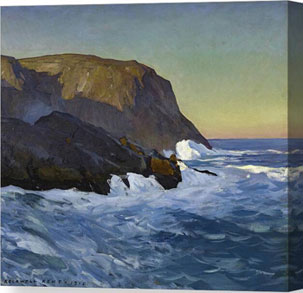 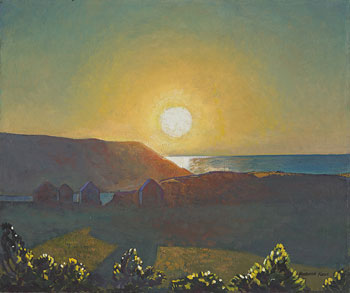
Rockwell Kent came to Monhegan in 1905, fell in love with the
landscape, and remained for the next five years, creating a series of
memorable images that define the island. Headlands is one of the
many images Kent painted of the granite bluffs that usher the
mariner into Monhegan's harbor. Influenced by the
Transcendentalists and Hudson River School, Kent was fascinated
by the effects of light and painted numerous images of the same
vistas. The painting in this exhibition shows the dark, looming bluffs
over a cerulean sea with a hint of sunset on the horizon. Another
Kent painting, Sunrise on Manana Island, depicts the nearby
island of Manana engulfed in early morning fog as a diffused light
rises on the horizon.
Robert Henri and George Bellows of the New York School of Art
came to Monhegan in 1910. Henri's painting of Cathedral Woods demonstrates his fascination with the patterns of the trees and the
dark colors reflect his preferences as a leading member of the
Ashcan School. His colleague, George Bellows, painted both land
and seascapes of the island, one of his most famous being Churn
and Break, where the sea spray flies high against the fierce black
cliffs.
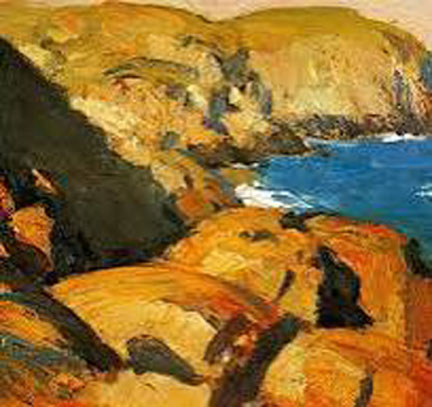
Edward Hopper, another famous American realist, is represented
in the exhibition by Black Head, a depiction of the headlands on a
sunny day. The sea is blue; the sky is transfused with a yellow light
and the island seems inviting in its solitude.
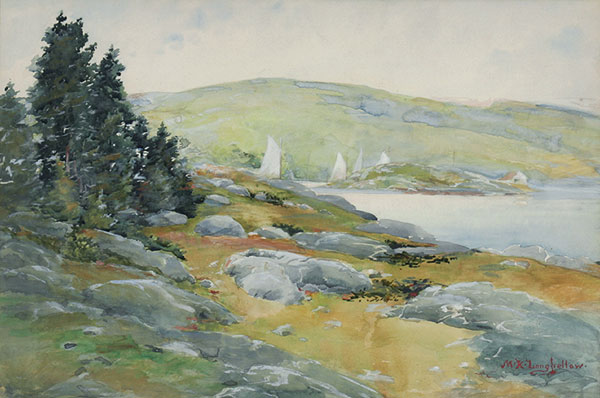
Mary King Longfellow, the poet's niece, is represented by a lovely
untitled watercolor of the harbor. By virtue of the medium, but
also, no doubt, the artist's preferred palette, the image is soft and
hazy with greens, and warm sunny tones prevailing.
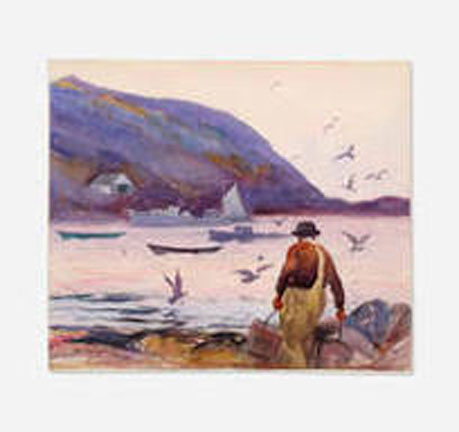
A similar softened palette prevails in Sears Gallagher's The Fish
Beach, one of then few paintings to feature a human figure as the
focal point. Although, the fisherman is seated on the beach, back to
the viewer, he is very much the center of attention in the
composition.
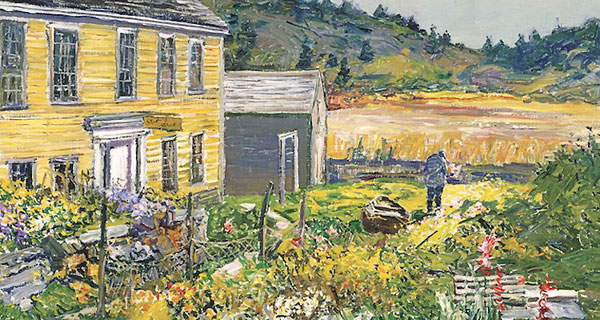
The same is true for Edward Willis Redfield's The Toymaker's
House, which is one of the few paintings in the exhibition to feature
an inland scene. The large canvas with the yellow clapboard house
surrounded by a vividly blooming garden is a joyful image of
summer on the island. The toymaker stands in the yard, a sketchy
figure blending with the landscape.
One comes away from the exhibition feeling the mysterious lure of
Monhegan, that Nature is master of the universe, and that sea and
land keep ancient secrets. When a human presence does appear it is
generic, shadowy, dominated by the surroundings. It is no
coincidence that Monhegan's woods are called Cathedral Woods –
not only because of the tall arching trees, but because of the sense
of upward aspiration and majesty they convey. When man appears
in Monhegan's landscape, he seems to come with reverence and
respect. The island's isolation and the wild beauty translated into
art that seems to breathe with an inner life – a touch of divinity – a
reliance and inscrutability that is timeless.
The exhibition, Art, Ecology, & the Resilience of a Maine Island:
Monhegan's Wildlands is on display at the Bowdoin College
Museum of Art, Brunswick, ME, until June 1, 2025 https://www
.bowdoin.edu/art-museum/
|